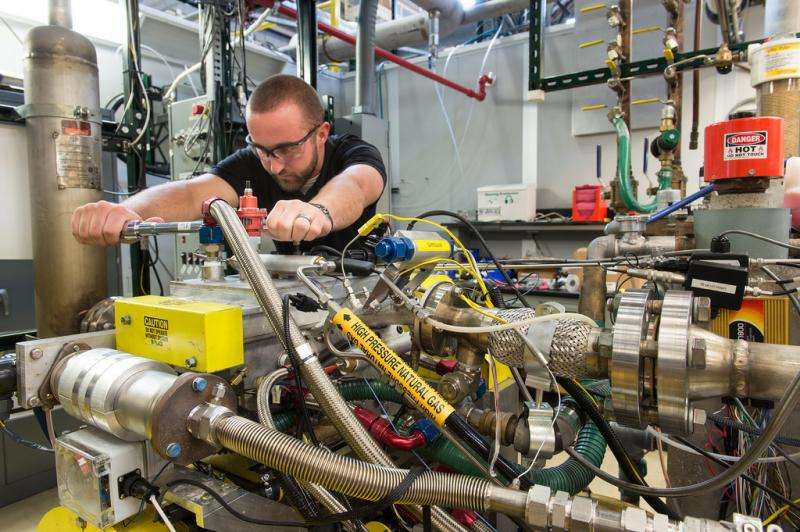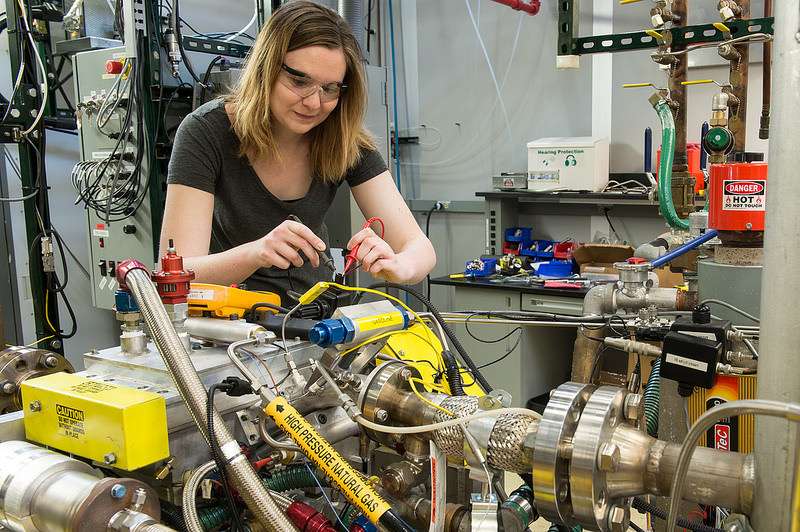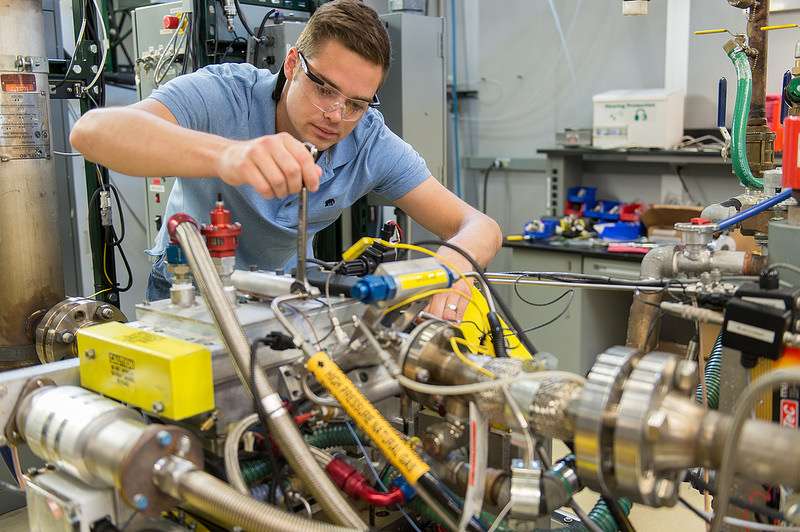Collaboration to study dual-fuel vehicles

It's not as challenging as mixing oil and water, but scientists at the U.S. Department of Energy's (DOE) Argonne National Laboratory are partnering with industry to study a tricky fuel mixing problem that could lead to more efficient engines.
The pre-competitive research is focused on exploring technical concepts and development of engine technology that simultaneously uses natural gas and traditional gasoline to maximize the best characteristics of both fuels, while reducing oil consumption and making the most of the recent boom in natural gas supplies in the United States. The project partners Argonne with Ford Motor Company and FCA US LLC, under a cooperative research and development agreement (CRADA).
"The fact that two major players in the auto industry are partnering with Argonne on this project really shows the promise of this approach," said project director Thomas Wallner. "The assumption here is that if you blend the fuels properly, you can make substantial gains in efficiency."
Wallner said vehicles that use both gasoline and natural gas have been around for some time, but what most people think of as a dual-fuel vehicle is actually more of a bi-fuel vehicle. Bi-fuel vehicles have compressed natural gas and gasoline on board, but typically use only one fuel at a time. A bi-fuel vehicle may use all its natural gas, then switch over to gasoline. The research concept being studied under the project will use both fuels at the same time, which will maximize the efficiency of an engine that uses this approach.
"Innovation in Ford powertrain research is constantly progressing," said Tom McCarthy, chief engineer, Ford Powertrain R&A. "This project provides the opportunity to advance alternative fuel technology, particularly the technical challenges and potential of natural gas direct injection and its integration with the gasoline fuel system in dual-fuel strategies."

Natural gas has much higher resistance to knocking, which is caused when the fuel/air mixture in an engine's cylinder auto-ignites. Mixing natural gas with gasoline would allow the engine to run without fuel enrichment and with optimal spark timing, thereby enabling higher engine efficiency and minimizing conditions that might otherwise cause knocking and potential engine damage. The team plans to explore technical opportunities to adjust ratios of the two fuels on the fly based on the load of the engine. For example, the engine under heavy load could run more efficiently with more natural gas, whereas under lower load it could use a blend heavier in gasoline. Additional factors that might influence the mixing ratio include the amount of each fuel available on-board as well as the engine's thermal state.
The project's objective is to understand potential benefits and demonstrate targeted blending of gasoline and natural gas in an engine that uses half as much gasoline and shows a 10 percent increase in overall efficiency and a 10 percent improvement in power density.

"FCA is committed to the exploration and development of promising engine technologies that will help improve efficiency, reduce emissions and benefit society," said Chris Cowland, FCA US Director-Advance and SRT Powertrain Engineering.
Provided by Argonne National Laboratory





















